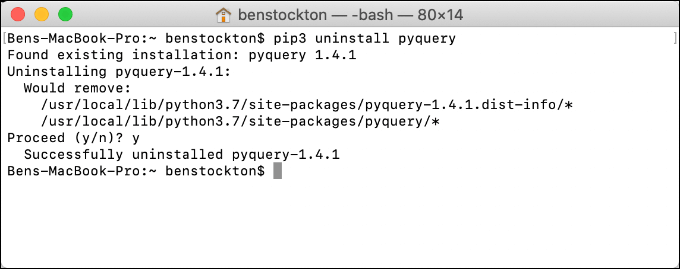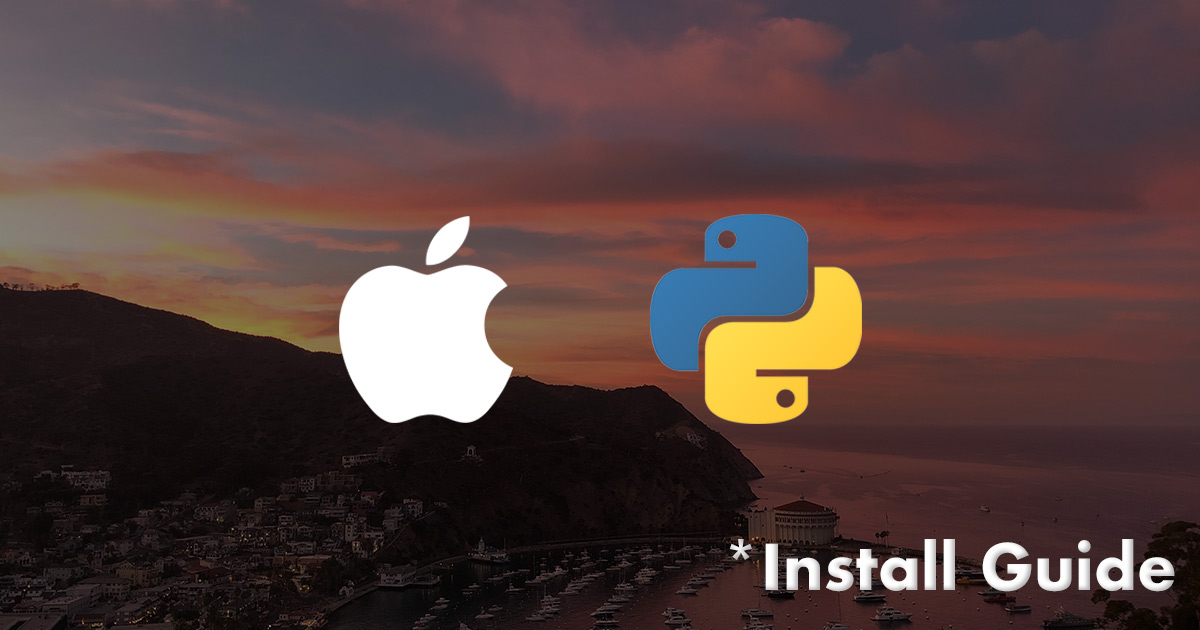

- MAC OS X INSTALL PIP FOR PYTHON MAC OS
- MAC OS X INSTALL PIP FOR PYTHON UPDATE
- MAC OS X INSTALL PIP FOR PYTHON MANUAL
- MAC OS X INSTALL PIP FOR PYTHON PASSWORD
- MAC OS X INSTALL PIP FOR PYTHON MAC
To check if it has been installed, run the following command in Terminal.
MAC OS X INSTALL PIP FOR PYTHON PASSWORD
You will be prompted to enter the admin or the current user’s password but once you do, pip will be installed. Open Terminal, and run the following command. In order to fix the ‘setup.py –no-user-cfg install’ error, and install pip on macOS, you need to use a different command. If you’re getting the ‘setup.py –no-user-cfg install’ error though, your installation is failing.įix ‘setup.py –no-user-cfg install’ error If you’ve installed Python 3, or you’re sticking to Python 2 but want to install pip, you can do so with a simple Terminal command, provided you have Homebrew installed. Since Python 2 is no longer supported, the latest tools that work with Python are also built to work with the new supported version.
MAC OS X INSTALL PIP FOR PYTHON MANUAL
Installing Python 3 on macOS is a manual task.
MAC OS X INSTALL PIP FOR PYTHON UPDATE
In fact, you cannot do an in-place update of the language and move to a higher, supported version. Unfortunately, the version of Python that is installed is an outdated one.
Install Python 3.MacOS comes with Python installed out-of-the-box which is great. Also, you can install as many modules as you want in the virtual environment. py script and try running it in the virtual environment. With this you have the complete virtual environment setup, now create any. To get out of the virtual environment, run the exit command. Now you can install anything in it, by running the pip3 install command, for example to install the requests module, run the following command: pip3 install requests This will start the virtual environment and you should see the name of the virtual environment added before the directory name as shown in the image below: To activate the virtual environment, run the following command: source my_env/bin/activate This will create a virtual environment for you with the following files in the virtual environment directory my_env: We can run the following command to create a virtual environment: python3 -m venv my_env Each virtual environment has its own Python binary (which matches the version of the binary that was used to create this environment) and can have its own independent set of installed Python packages in its site directories. The venv module provides support for creating lightweight “virtual environments” with their own site directories, optionally isolated from system site directories. Use venv to create Virtual EnvironmentĪs per the official documentation of venv module, To verify the successful installation of Python 3.x version, run the python3 command and the IDLE should start in your terminal. Homebrew will also install pip for you which you can verify by running the pip3 command. Once you have Homebrew set up, run the following command to install the latest version of Python: $ brew install python If you don't have Homebrew installed on your Macbook, you can install Homebrew on your MacOSX and then use it to install Python 3.8 on your machine. We will use Homebrew to install Python 3.8 and will then move on to creating a virtual environment. So to set up a virtual environment, we won't be using virtualenv or virtualenvwrapper module, which are most popular to set up a virtual environment.īut we will be using the venv module which comes as a default with Python 3.x version and is recommended to use for virtual environment creation. You can set up a different virtual environment for each project for example if you are working on one project based on Tkinter module, some other projects based on Numpy module, then you can easily do this. 
We can have different versions of Python installed inside the virtual environment. When we have a virtual environment, then we can install new packages inside the virtual environment which will not affect the operating system's python modules.


You must be thinking about why we need a virtual environment? So here are a few points in its favor: Instead, you should set up a virtual environment for your development purpose.
MAC OS X INSTALL PIP FOR PYTHON MAC
If you are a Mac user, you should know that Python 2.7.x comes pre-installed in your Macbook, but as that is required by your operating system, so you cannot modify it or update it and I would recommend that you don't use it at all.
MAC OS X INSTALL PIP FOR PYTHON MAC OS
This article will help you to set up a Python virtual environment on Mac OS or your Macbook.








 0 kommentar(er)
0 kommentar(er)
